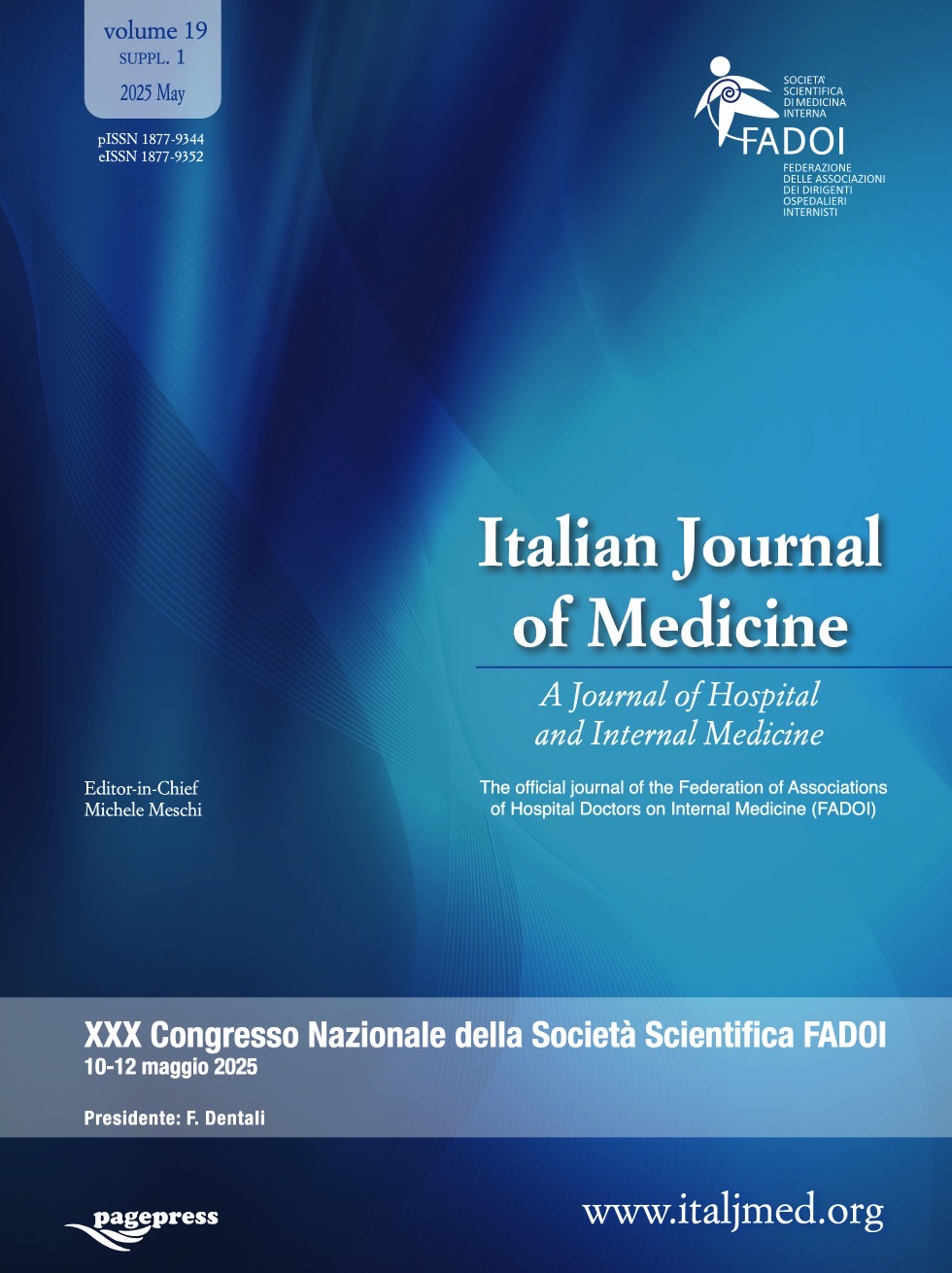XXX FADOI Italian Congress | 10-12 May 2025
25 August 2025
Vol. 19 No. 1(s1) (2025): XXX FADOI Italian Congress | 10-12 May 2025
P03 | Role of GLP-1 RAs on bone metabolism in patients with type 2 diabetes mellitus: longitudinal study
A. Al Refaie1, L. Baldassini2, C. Mondillo2, R. Tarquini3, L. Gennari2, S. Gonnelli2, C. Caffarelli2 | 1Section of Internal Medicine, Department of Medicine, Surgery and Neuroscience, University of Siena; Division of Internal Medicine I, San Giuseppe Hospital, Empoli, 2Section of Internal Medicine, Department of Medicine, Surgery and Neuroscience, University of Siena, 3Division of Internal Medicine I, San Giuseppe Hospital, Empoli, Italy
Publisher's note
All claims expressed in this article are solely those of the authors and do not necessarily represent those of their affiliated organizations, or those of the publisher, the editors and the reviewers. Any product that may be evaluated in this article or claim that may be made by its manufacturer is not guaranteed or endorsed by the publisher.
All claims expressed in this article are solely those of the authors and do not necessarily represent those of their affiliated organizations, or those of the publisher, the editors and the reviewers. Any product that may be evaluated in this article or claim that may be made by its manufacturer is not guaranteed or endorsed by the publisher.
55
Views
0
Downloads







